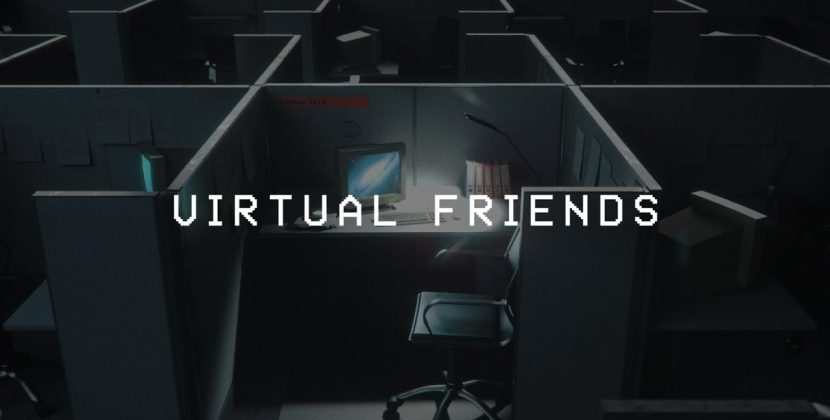
Step into the world of augmented and virtual reality, where everything from gaming to medicine is being transformed. As these technologies continue to evolve, they are not only changing the way we live but also creating new career opportunities while phasing out traditional roles. With its potential to revolutionize multiple industries, it’s no surprise that many experts predict a major shift in employment trends over the next few years. In this blog post, we will explore how VR and AR are poised to shape our workforce for better or worse, and what you can do to position yourself for success in this dynamic landscape.
What is VR?
Virtual reality (VR) is a technology that immerses the user in an interactive 3D environment. VR can be used for entertainment, education, and medical treatments.
VR will create new jobs in gaming development and design, advertising, engineering, and other fields. It will also eliminate jobs in traditional media such as TV production and magazine journalism.
What is AR?
Augmented reality (AR) and virtual reality (VR) are both types of immersive computer-generated environments that let users see, hear, and feel aspects of the real world around them. AR and VR can be used for a variety of applications, such as training simulations, marketing materials, architecture designs, and gaming experiences.
AR and VR will create new jobs and eliminate others
Augmented reality has the potential to create a range of new jobs across industries. For example, engineers will need to develop the software that creates realistic 3D images, designers will need to come up with innovative ways to display information in AR, and marketers will need to find ways to use AR to sell products. Meanwhile, many current job functions that rely on physical interaction with objects or people may eventually be replaced by artificial intelligence (AI) or virtual assistants in AR or VR. This means that not only will many workers find new roles in AR or VR development, but many traditional occupations may become obsolete due to automation.
One early example of how AR is already impacting the workforce is through training simulations. Many businesses now use training simulations as an effective way to train their employees. However, training simulations can also be used for other purposes such as marketing materials and product demonstrations. In fact, one study found that nearly two-thirds of business executives believe that using virtual reality for product demonstrations would increase customer demand. This suggests that businesses could soon be using VR more often in order to sell their products instead
How will VR and AR change the future of work?
VR and AR are revolutionizing the way we interact with the world around us, and they’re also creating new opportunities for work.
For businesses, VR and AR can be used to create new products or services. They can also help businesses improve customer service by immersing customers in a product or service experience. And finally, VR and AR can be used to train employees on new processes or procedures.
VR and AR are also changing the way we learn. They can be used to give students access to information that’s not available in class. And they can help employers learn more about their employees.
Overall, VR and AR are changing the way we work by eliminating some tasks and creating new opportunities. In the future, these technologies will likely further change how we live and interact with the world around us.
The Benefits of VR and AR
The fast-growing field of virtual reality (VR) and augmented reality (AR) has the potential to create many new jobs, change how people learn, work, and play, and even improve health care. Here are five key benefits of VR and AR:
1. VR will create new jobs in engineering, design, marketing, and other fields.
2. VR can be used to improve learning by providing a more immersive experience that helps students remember information better.
3. AR can help people find products or services more easily by overlaying digital information on top of real-world objects or surfaces.
4. AR could be used to improve patient care by allowing doctors to view medical images or X-rays right inside the hospital room.
5. VR and AR could even help reduce physical pain by allowing people to experience medical procedures remotely or through 3D simulations of their own body parts.
The Risks of VR and AR
Virtual reality (VR) and augmented reality (AR) both present unique opportunities and challenges. VR could create new jobs in areas like programming, design, and marketing. AR could supplant current jobs in things like geospatial intelligence, engineering, and medical diagnosis.
However, there are also potential risks associated with VR and AR. If users become too immersed in the virtual world or the AR environment, they may suffer from psychological problems such as anxiety or depression. Additionally, people who are not suited for extended periods of immersion in a virtual world or AR environment may experience nausea or confusion.
Overall, VR and AR present a number of opportunities and challenges that will have an impact on our economy and way of life. It’s important to be aware of these risks so that we can make best decisions for our businesses and ourselves.
Conclusion
Virtual Reality and Augmented Reality are growing quickly, with more and more people adopting them into their daily lives. These technologies have the potential to change the world in ways we can’t even imagine, but they also pose some serious economic challenges. As VR and AR become more popular, it’s likely that a number of traditional jobs will be eliminated, leaving many people unemployed. However, this isn’t necessarily a bad thing; by shifting our economy away from resources that are difficult toreplace (like human labor) and towards resources whose replacement is much easier to find (like digital files), VR and AR could help us achieve indefinite growth on a finite planet.









